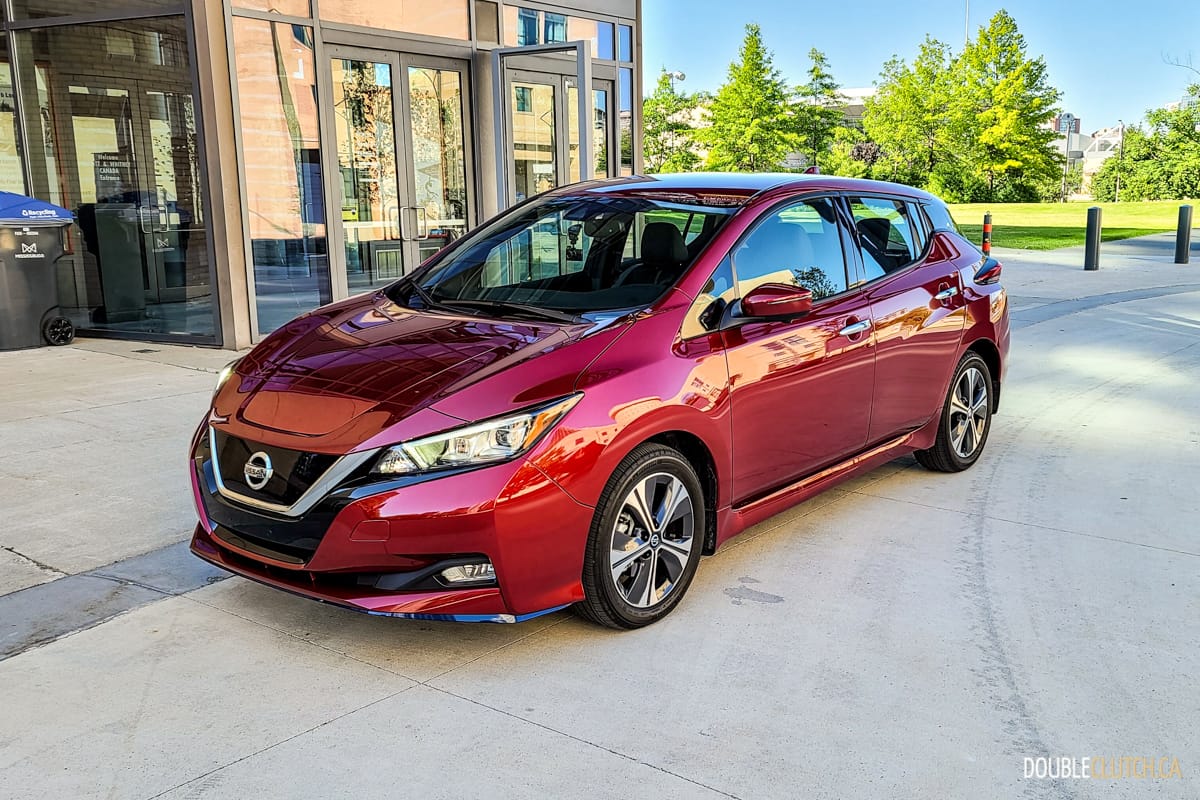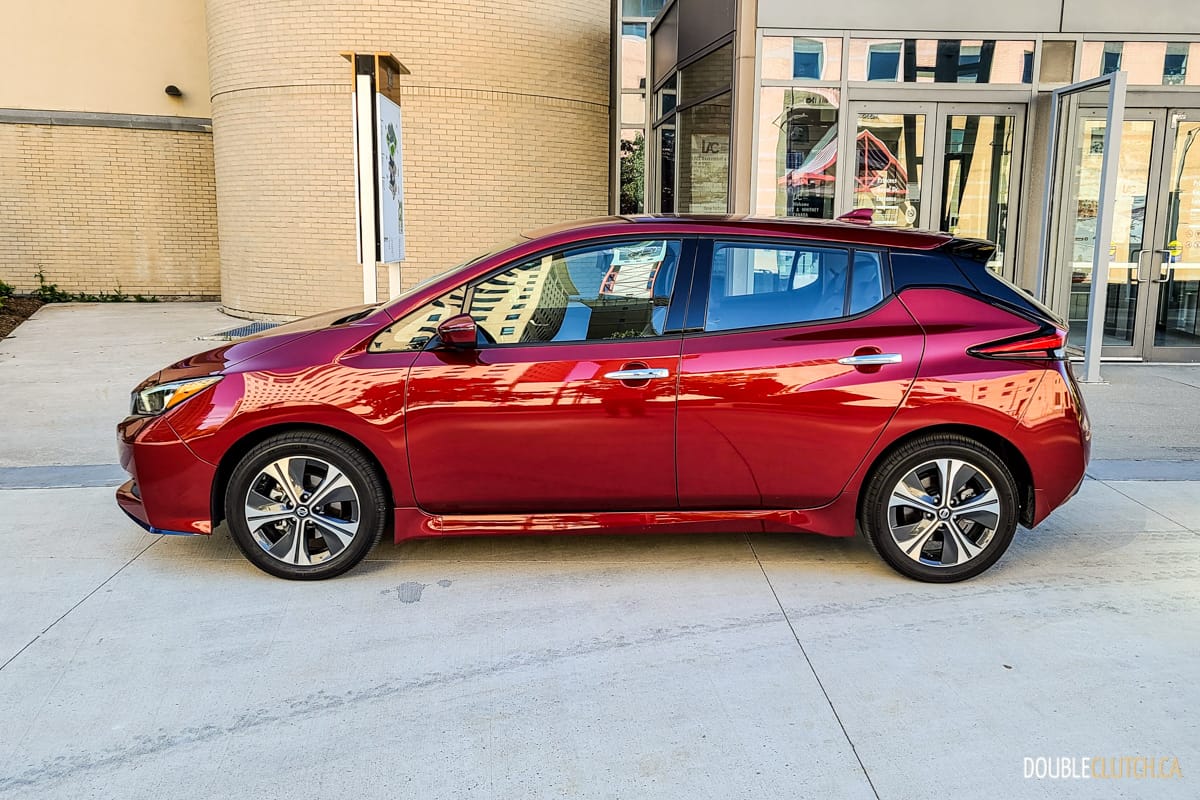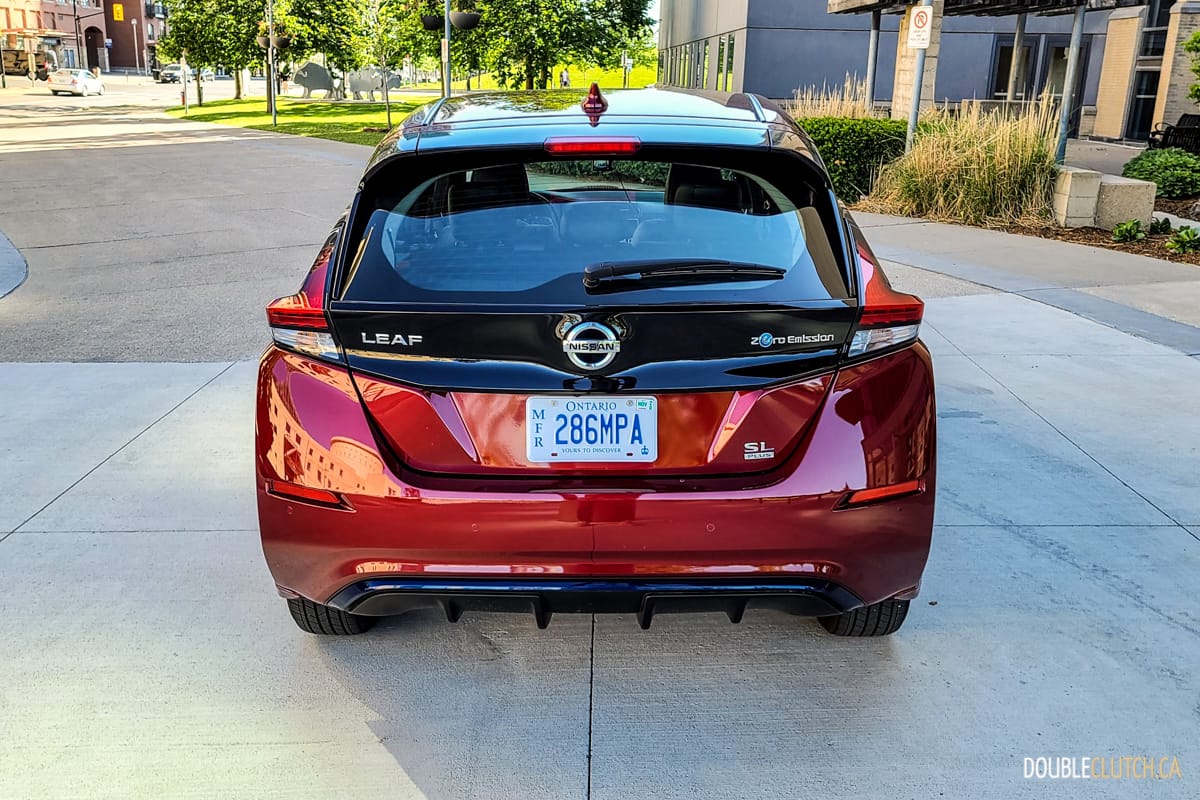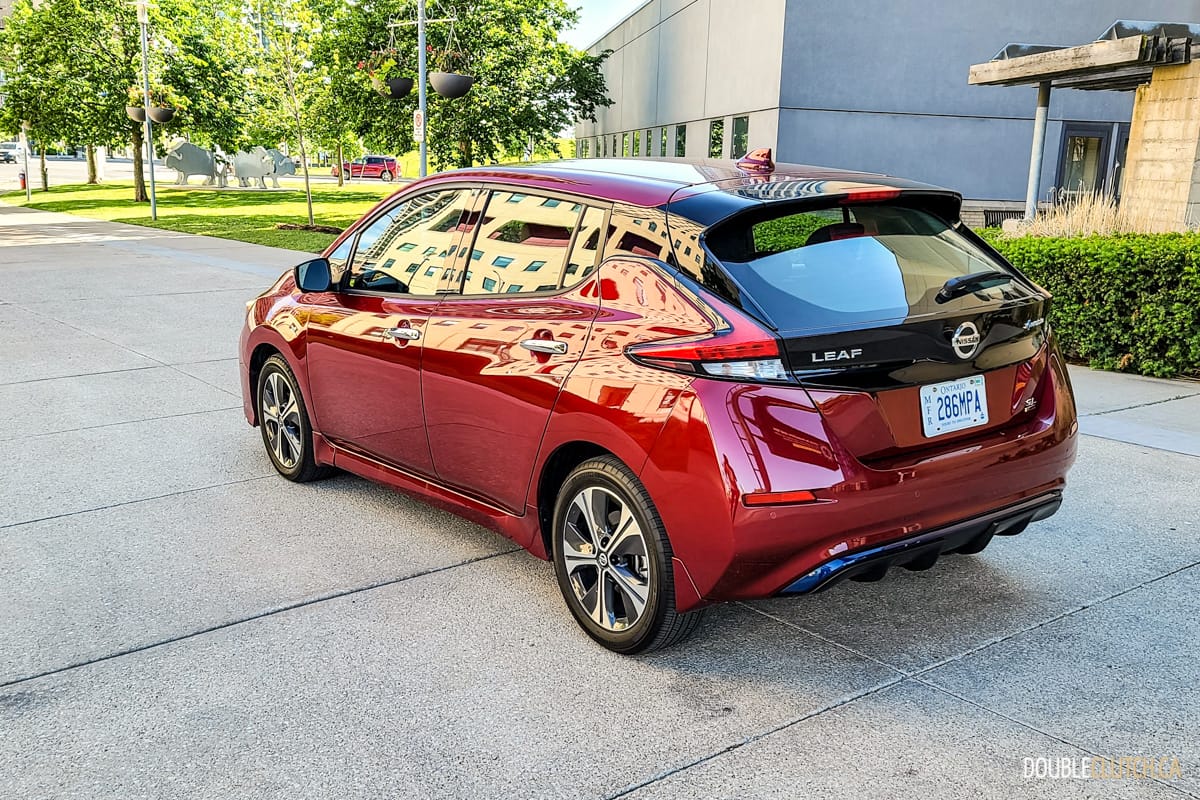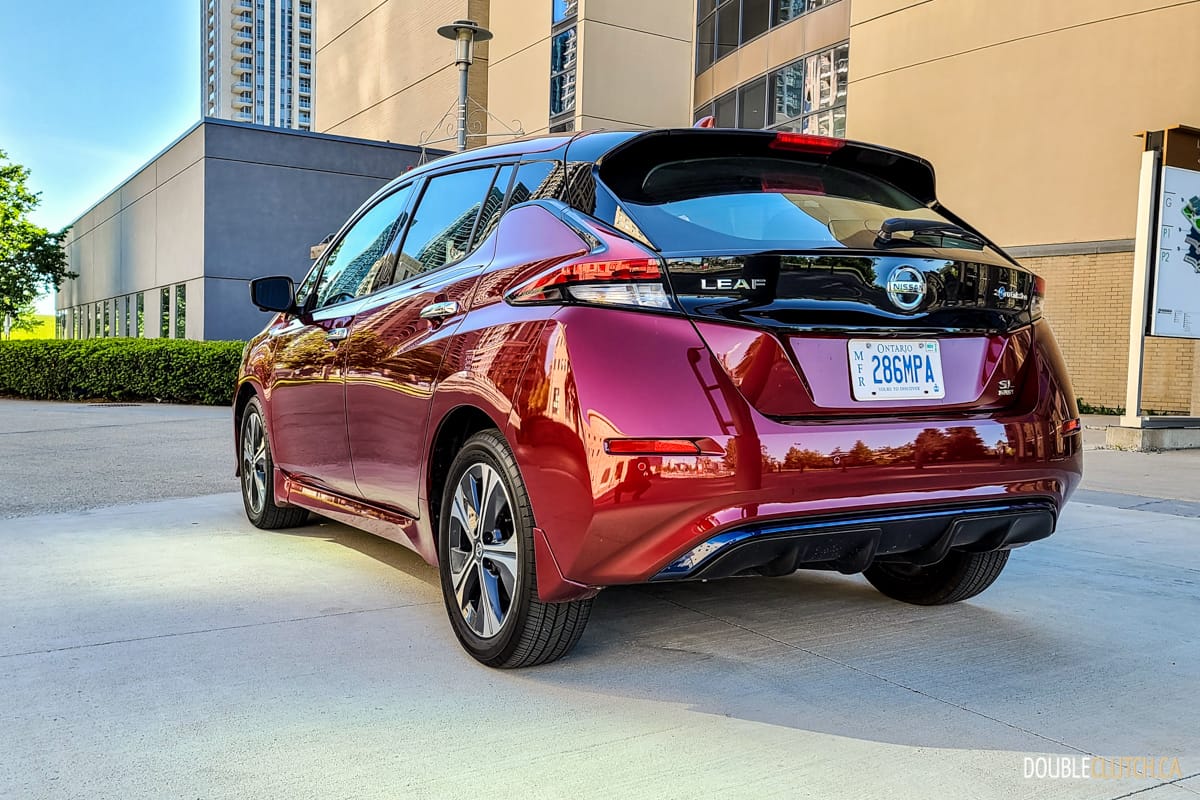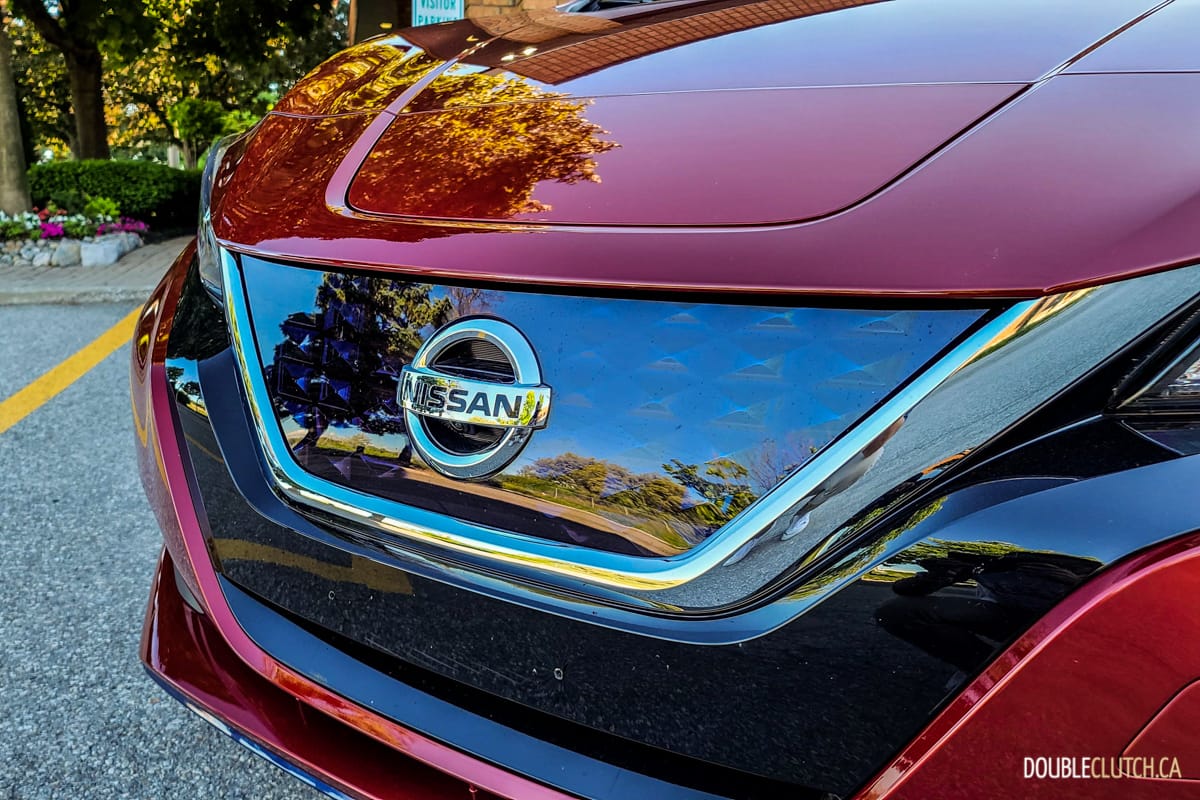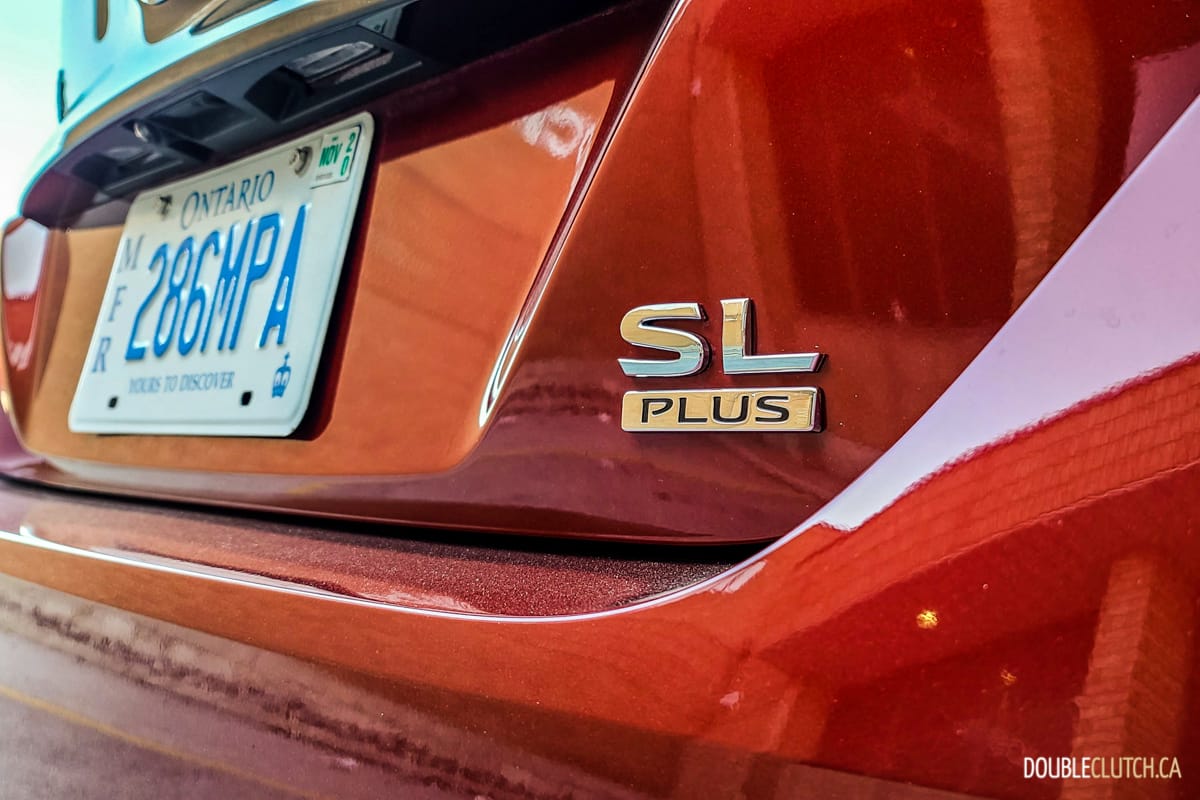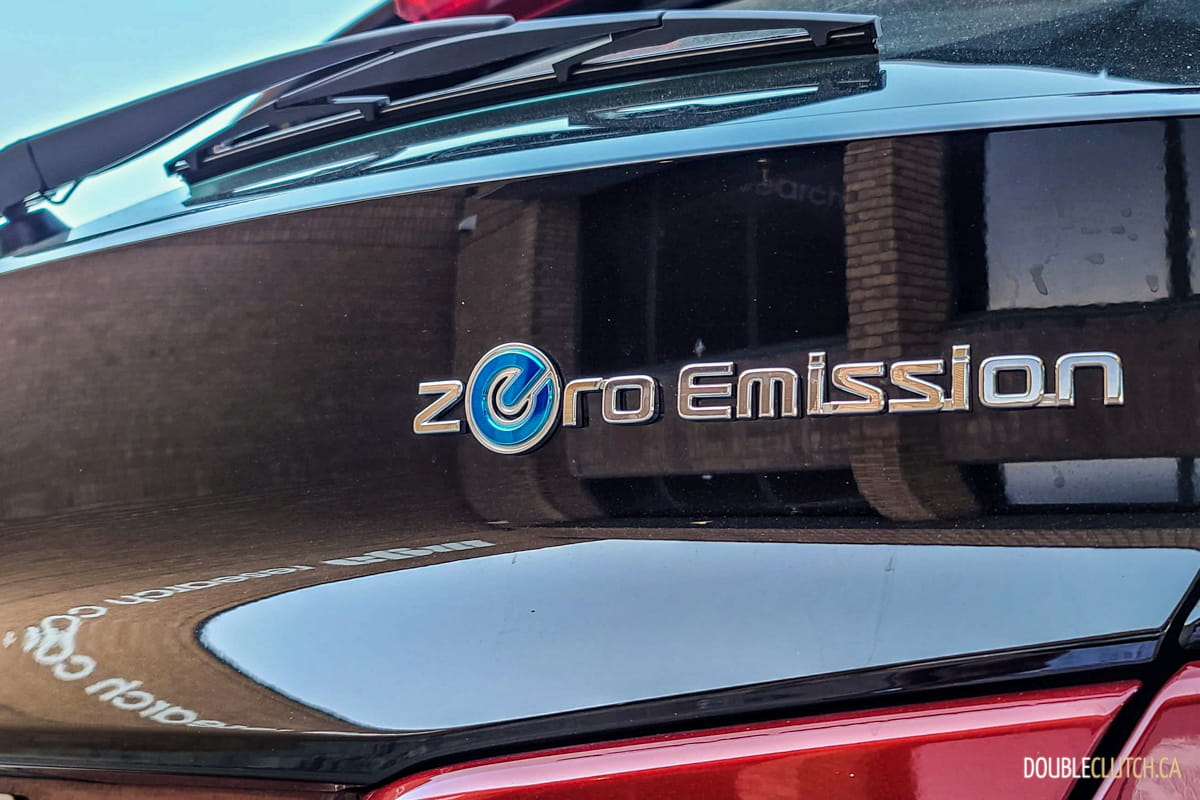When the Nissan Leaf was introduced ten years ago, little did Nissan know the impact it would have on a global scale. Since its arrival, just about every manufacturer entered the EV market with their own entries. The Leaf came to market with an odd design and limited range that left consumers either loving or hating it. In its first iteration, its 30-kWh lithium-ion battery could, at best, achieve 175 kilometers of range. They weren’t bad numbers at the time, but the industry has moved on. Enter this 2020 Nissan Leaf SL Plus, now in its second generation.
AJAC, the Automotive Journalists Association of Canada, which we are part of, awarded the Leaf Plus the Green Car of the Year award for 2020. It also won the same award in 2019, for those keeping score. As of May 2020, Nissan has sold over 470,000 Nissan Leafs worldwide. In Canada, Nissan sold 2,881 units in 2019, coming in at number two for annual EV sales.
A 2020 Nissan Leaf starts at $44,298 for the SV model, which comes packed with a 40-kWh lithium-ion battery and a range of 243 kilometers. Move up to the S Plus, SV Plus or SL Plus and you will be rewarded with a larger 62-kWh and a 160-kW electric motor, up from the standard 110-kW on the base model. The result is 363 kilometers of range when fully charged. Additionally, the Leaf Plus gets a quick-charge port that is lacking on the base model. As with other EVs, in certain conditions and during winter months, range will vary.
The base Leaf is rated at 147 horsepower and 236 lb-ft. of torque while the Plus tested here produces a much healthier 214 horsepower and 250 lb-ft of torque. Unlike some of the competition, namely the Chevrolet Bolt (reviewed here) and Hyundai Kona EV, the Leaf lacks the ability to switch to various drive modes. There is no ability to improve throttle response and tightening of the steering for a more enthusiastic driving experience.
This is not to say that the Leaf does not move with gusto with all that torque available from the moment you step on the throttle. However, it falls behind in available torque when compared to the Bolt’s 266 lb-ft. of torque Kona EV’s 290 lb-ft. Even still, the Leaf has enough urgency and power to keep up and pass vehicles with confidence, even on the highway. In the city, just like all other EVs available, the Leaf is a joy to drive and a truly calm commuter.
Steering feel is pretty much like all EVs currently on the market right now. If you have played Forza or Gran Turismo with a Logitech steering wheel, it’s not that far off. The lack of feedback and on-center feel is readily apparent. Luckily with the Nissan Leaf’s low center of gravity due to the placement of the car’s batteries right at the floor, it feels planted when taking on-ramps and quick turns, as body roll is kept to a bare minimum. Luckily the CVT is well sorted on the Leaf with smooth shift simulations and .
Inside the Leaf, Nissan decided to play it safe. With the exception of the gear selector, the interior looks like any combustion engine vehicle currently on the market. The eight-inch infotainment screen doesn’t dazzle users with fancy graphics and loads of information regarding the Leaf’s energy consumption, and Android Auto and Apple CarPlay are standard. The EV information is directly in front of the driver as the part of the instrument cluster, and a Bose sound system is also on board here.
The SL Plus also gets leather seats, while lower trim levels all make do with cloth. Heated front and rear seats are standard throughout the Leaf range. The seats are comfortable, but do lack additional support to keep occupants planted during spirited driving. Rear legroom is ample and adults will have little to complain about in terms of comfort. Seating three adults in the rear will be tight but not impossible, making the Leaf a questionable choice for any sort of ride-sharing platforms. Cargo space is generous at 3,284-liters with the rear seats folded.
The 2020 Leaf has Nissan Intelligent Mobility included on all models. This technology allows the car to detect what is happening in its surrounding area. This includes features such as Intelligent Driving that monitors the road to keep the car within its lane, adaptive cruise control and forward collision warning. In addition, Nissan Connect EV allows users to use their cell phone to warm or cool their Leaf before entering, check the level of charge and know the range available before deciding to hit the road. Nissan is quite proud of all of this technology and they make sure the information is front and center when potential customers are doing their research.
Nissan does include a feature known as the e-Pedal or One Pedal Driving, which some competitors have in their EVs but don’t do it as quite as well. The technology does take some getting used to, as users will learn to modulate how they step on the accelerator. As the accelerator is released, the car will immediately begin to slow down and regenerate energy without having to touch the brake pedal.
The Leaf has a silent persona behind the wheel. Newcomers to electric vehicles will find it odd the first time, but get used to it quickly. Nissan has added an acoustic windshield that reduces outside noise by 2-3 decibels which makes the Leaf a hushed environment even when travelling at high speed. After a long day at the office an isolation chamber like the Leaf may be what consumers need to regain their sanity.
As a daily driver, the Nissan Leaf does everything that an EV should. It may not be the fastest EV or have the highest range in the segment but is good enough for the thousands of people that have already put their hard earned cash towards having one of these in their driveway. Over the last several years, Tesla always received the majority of attention when people talk about EV’s, however the 2020 Nissan Leaf SL Plus is a silent weapon in the segment that should be worth serious consideration.







